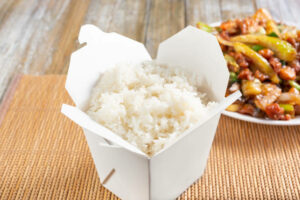Safety of Leftover Rice
go.ncsu.edu/readext?987632
en Español / em Português
El inglés es el idioma de control de esta página. En la medida en que haya algún conflicto entre la traducción al inglés y la traducción, el inglés prevalece.
Al hacer clic en el enlace de traducción se activa un servicio de traducción gratuito para convertir la página al español. Al igual que con cualquier traducción por Internet, la conversión no es sensible al contexto y puede que no traduzca el texto en su significado original. NC State Extension no garantiza la exactitud del texto traducido. Por favor, tenga en cuenta que algunas aplicaciones y/o servicios pueden no funcionar como se espera cuando se traducen.
Português
Inglês é o idioma de controle desta página. Na medida que haja algum conflito entre o texto original em Inglês e a tradução, o Inglês prevalece.
Ao clicar no link de tradução, um serviço gratuito de tradução será ativado para converter a página para o Português. Como em qualquer tradução pela internet, a conversão não é sensivel ao contexto e pode não ocorrer a tradução para o significado orginal. O serviço de Extensão da Carolina do Norte (NC State Extension) não garante a exatidão do texto traduzido. Por favor, observe que algumas funções ou serviços podem não funcionar como esperado após a tradução.
English
English is the controlling language of this page. To the extent there is any conflict between the English text and the translation, English controls.
Clicking on the translation link activates a free translation service to convert the page to Spanish. As with any Internet translation, the conversion is not context-sensitive and may not translate the text to its original meaning. NC State Extension does not guarantee the accuracy of the translated text. Please note that some applications and/or services may not function as expected when translated.
Collapse ▲Leftover rice. There are several articles making their way around the internet and some columns in national newspapers on this topic. Nothing has really changed with rice and it’s how you treat leftover rice—whether it’s some you made yourself or brought home from a restaurant—that’s important.
Nothing has really changed with rice and it’s how you treat leftover rice—whether it’s some you made yourself or brought home from a restaurant—that’s important.
Care should be taken with all leftovers. The United States Department of Agriculture
says that cooked food should not be left at room temperature for more than two hours—we call this the “two hour” rule.
This is especially true with starchy foods such as rice because of the Bacillus cereus (B. cereus) pathogen. This pathogen is what we call a spore former. Properly cooked rice may have these spores. They only become an issue when rice is cooked and starts to cool. If not cooled properly or left at room temperature the spores can grow into a toxin. What’s unique about this toxin is that it is heat resistant. Which means that no matter how long or hot you cook the food when reheating, you can’t kill it! The toxin is there and it can make you sick!
If these heat resistant toxins have developed you can get sick within one to six hours after eating the contaminated food. Typically, these toxins cause vomiting or diarrhea.
So, the key to keeping leftover rice (and all other leftovers) safe is to either keep it hot (over 135 degrees F) or keep it cold (below 41 degrees F). This also brings up the question about the temperature of your refrigerator…is it cold enough to keep the food below 41 degrees F?
Mary Yavelak, MS Extension Associate with our N.C. Cooperative Extension Service’s Safe Plates program shares these best practices for leftover rice (and other foods):
- Cool as soon as possible after cooking. Never leave leftovers in a turned off oven, rice cooker or microwave overnight.
- When cooling, the targets you want to hit are from 135 degrees F to 70 degrees F within 2 hours and then down to refrigeration temperature (41 degrees F) within 4 more hours. If it’s not cooled to 70 degrees F within those first 2 hours, it needs to be pitched out.
- If reheating food, only reheat the portion you will eat, as reheating and cooling
multiple times will take it through temperatures that can cause bacterial growth/toxin formation. - If kept at or below 41 degrees F leftovers are microbiologically safe for 7 days, but the only way to ensure that is having a fridge thermometer.
If you have too much rice to eat within that time, you could try freezing it. But,
according to the National Center for Home Food Preservation cooked rice is one of those foods that does not freeze well. It tends to get mushy and tastes warmed over. If you do freeze it, try to eat within six months for best quality. Freezing will stop the bacteria growth, but remember it starts again when thawed.
If you’d like to hear more about the safety of leftover rice from some experts, I suggest you listen to a podcast called Risky or Not. This podcast is produced by two Extension Food Safety Specialists: Professor Ben Chapman, Ph.D. here at NC State and Dr. Don Schaffner from Rutgers University. In Episode #48 of the podcast, they talked about the safety of old refrigerated fried rice. They determined that the rice was NOT RISKY–but as always, the details are in the discussion. Check them out at riskyornot.co (yes, that’s co not com).
Syracuse is a Family and Consumer Science team member and can be reached at N.C. Cooperative Extension, Brunswick County Center 910-253-2610 or by email at
clsyracu@ncsu.edu



